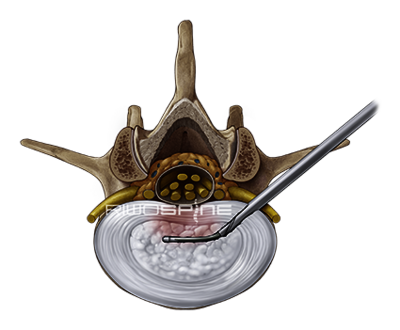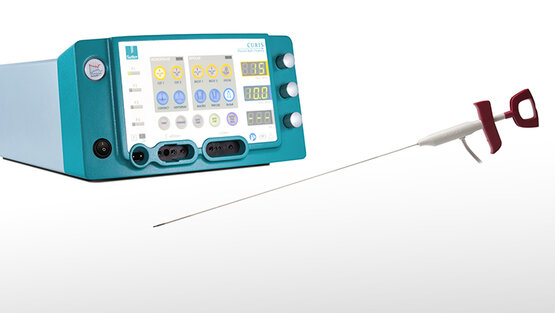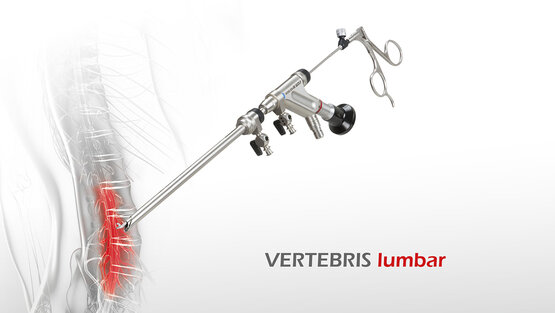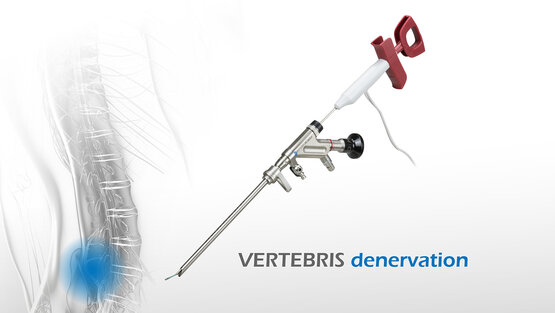
Discogenic pain syndrome
Discogenic pain syndrome is a degenerative disease of the spine which is caused by the wear and tear of the vertebral disc. Starting with a loss of fluid in the inner core of the vertebral disc (the nucleus pulposus), the disc then loses resilience and elasticity, which can lead to segmental instability. Sensitization of the region can result in a reduction of the stimulus threshold and lead to chronic discogenic pain.
Tears in the outer ring of the disc (the annulus fibrosis) can become inflamed and also be a source of pain.
Additionally, protrusions of the vertebral disc can press on the spinal and extraspinal nerve structures, causing radicular pain.
VERTEBRIS lumbar
The VERTEBRIS lumbar system has been developed to address the pathology associated with degenerative disc disease. Using a transforaminal approach, a working sleeve and endoscope provide visualized access to the interior of the disc. There, forceps and other instruments can be used to decompress the disc, and the degenerative nucleus material removed. The TipControl RF electrode can be used to deliver energy to the interior of the disc as well as to coagulate painful nerve fibers in the inflamed annulus. The endoscope can also be repositioned outside of the disc to address any remaining herniated nucleus material that is compressing neural structures.



